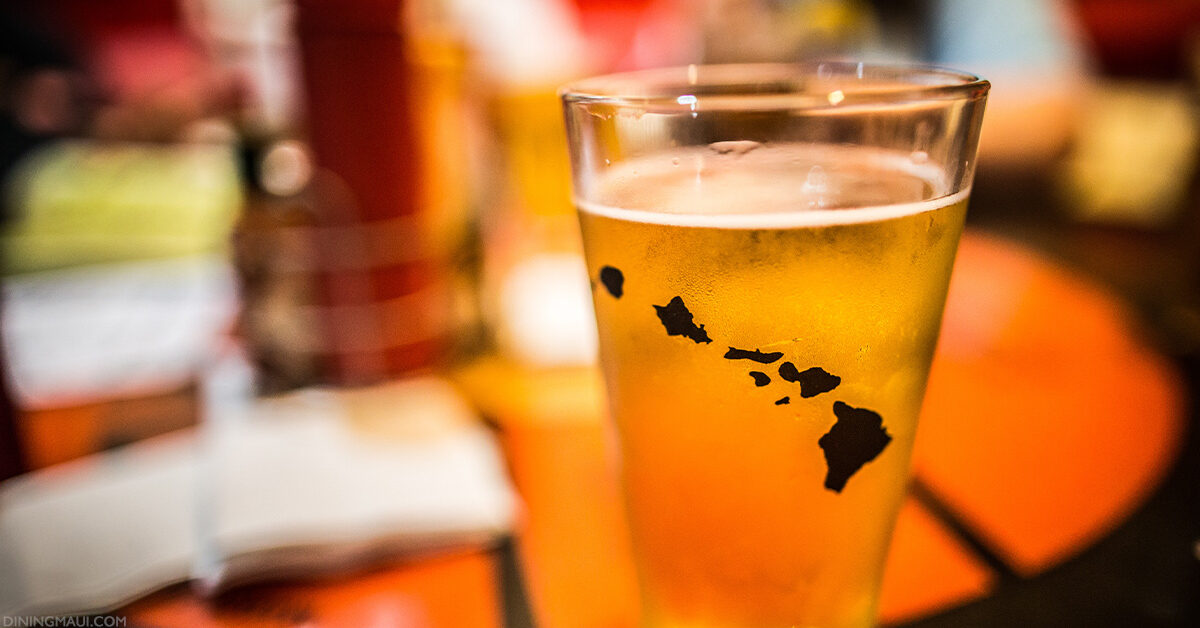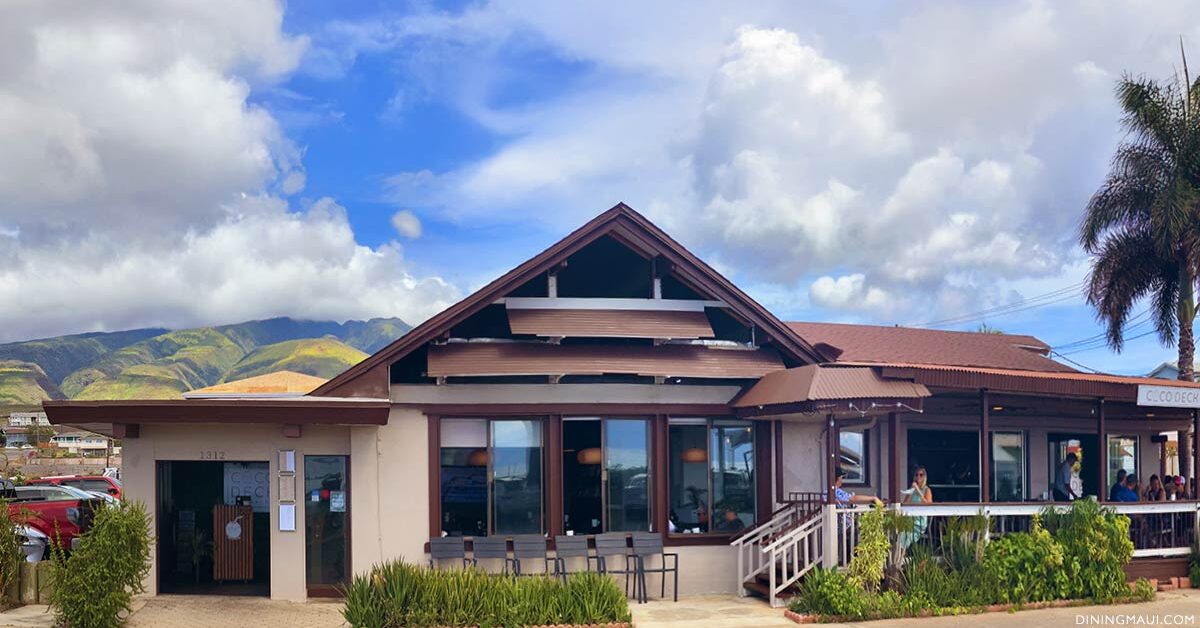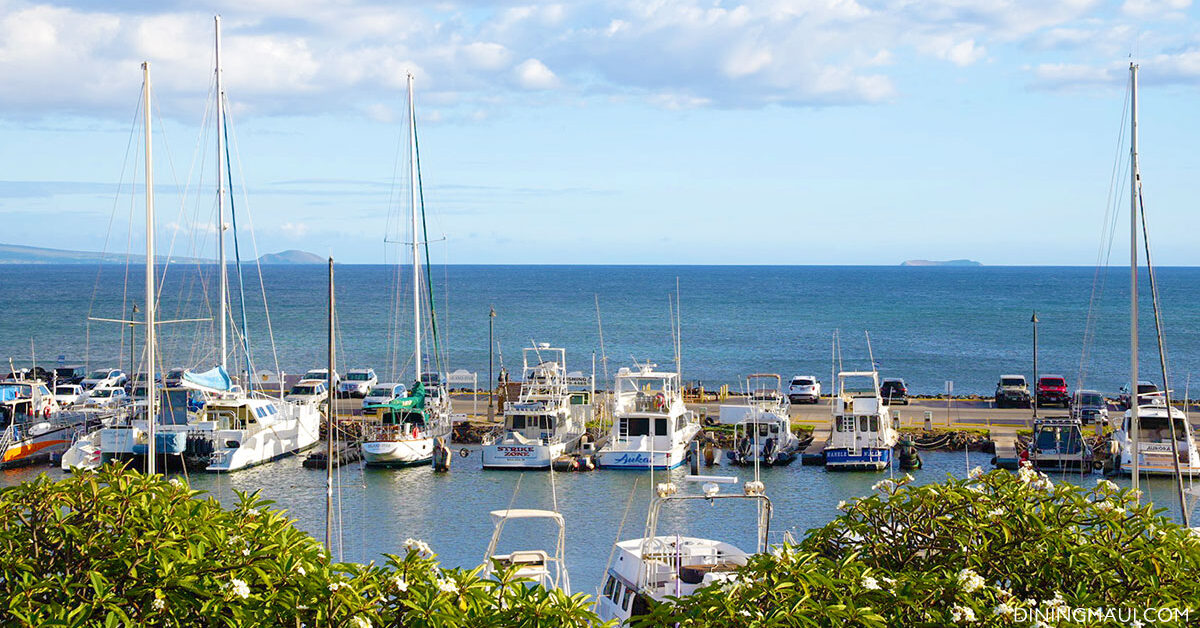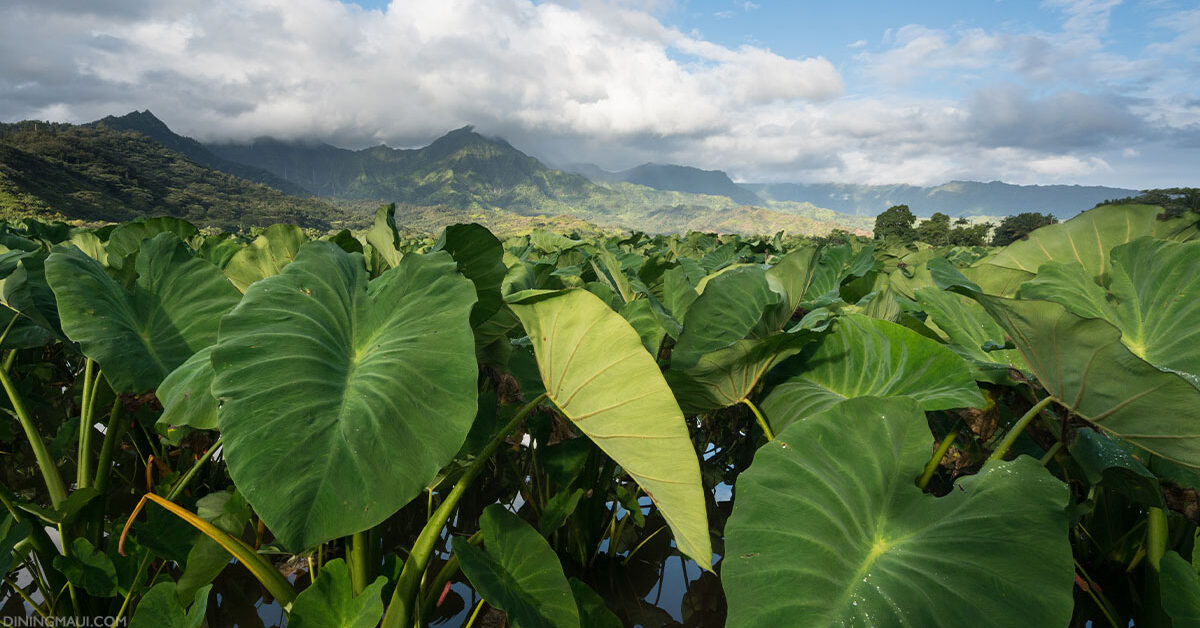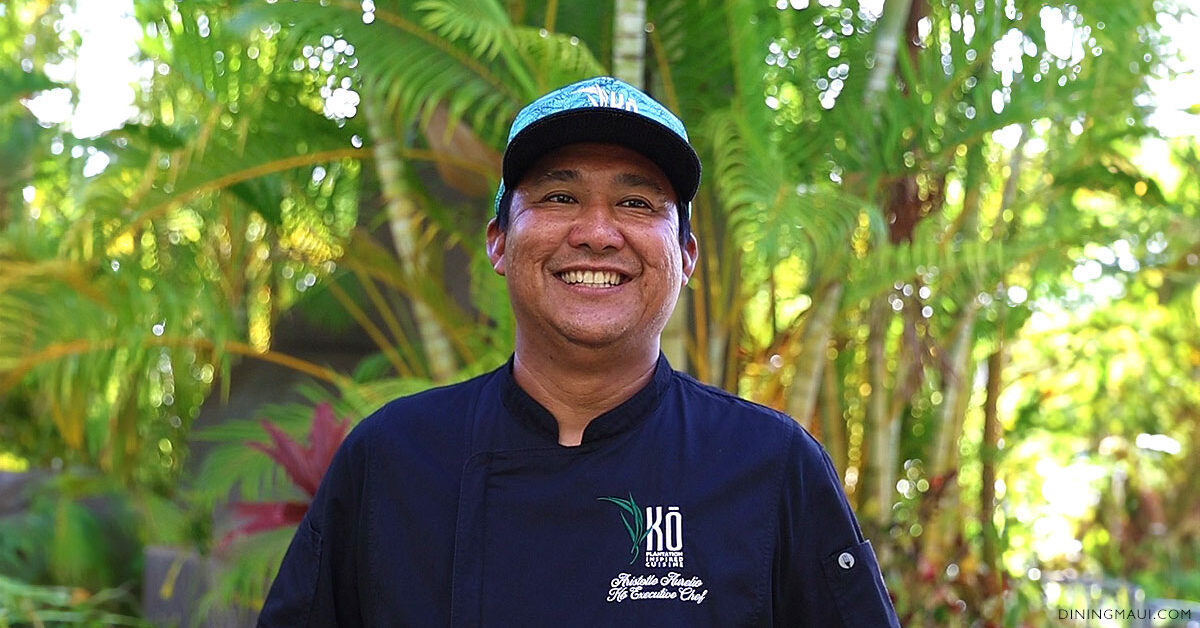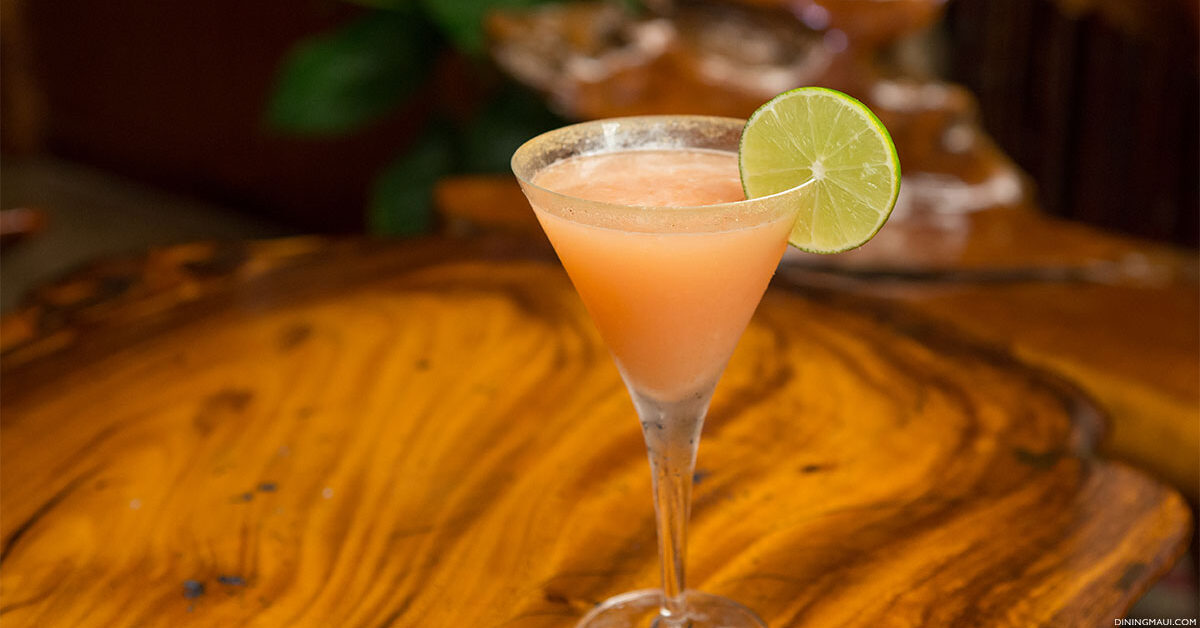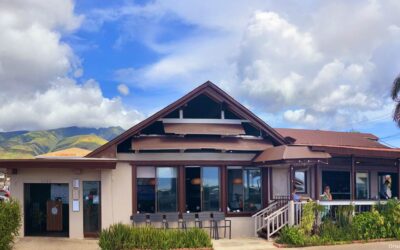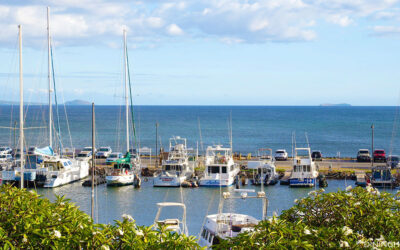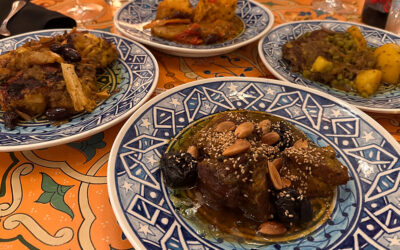Hawaiian Cooking Methods
(and the Maui Restaurants that Honor Them)
When Polynesians landed in Hawaii over 1500 years ago, the supplies they carted with them in their canoes—as well as the land and ocean they had journeyed to—served as the extent of their resources.
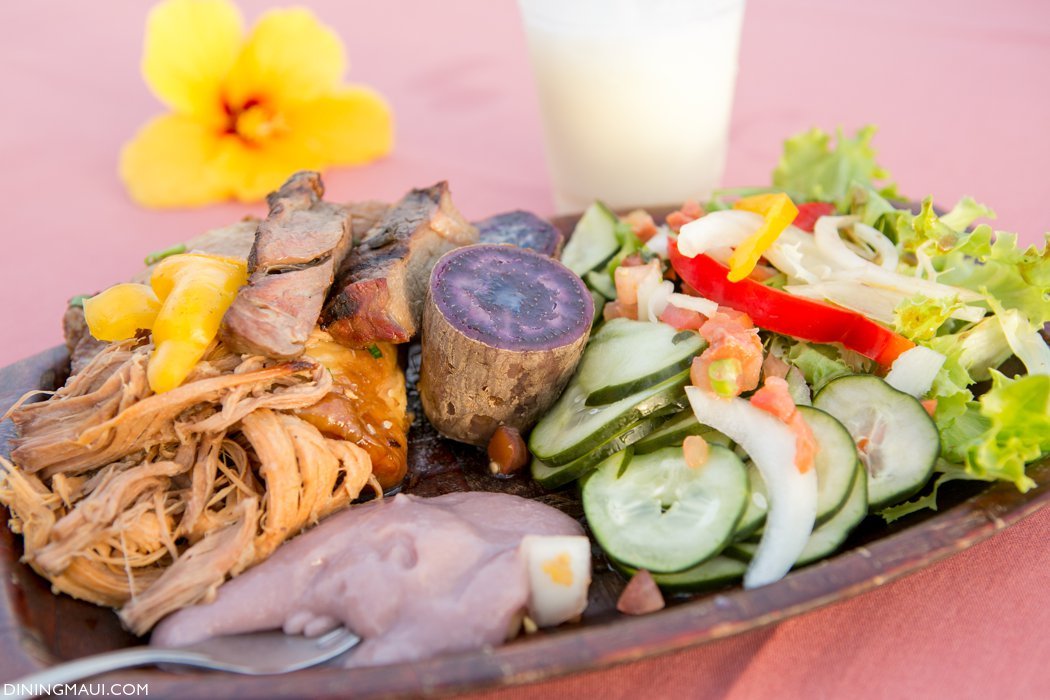
From drying fish in the hot Hawaiian sun and pounding taro into poi to roasting reef fish over flames and fermenting their vegetables, Hawaiians were adept at inventive measures, learning to cultivate the ‘aina and sea to nourish the 1 million people their population soared to by the time of Captain Cook’s arrival. While many of their traditional cooking methods and recipes may have gotten lost in the modernization of the islands, a number of Aloha State restaurants and events pay tribute not only to native dishes and their ingredients but also to the innovative techniques behind them.
Here’s the lowdown on Hawaiian culinary customs—and where to go on Maui for the eats that were spawned by them:
Kalua
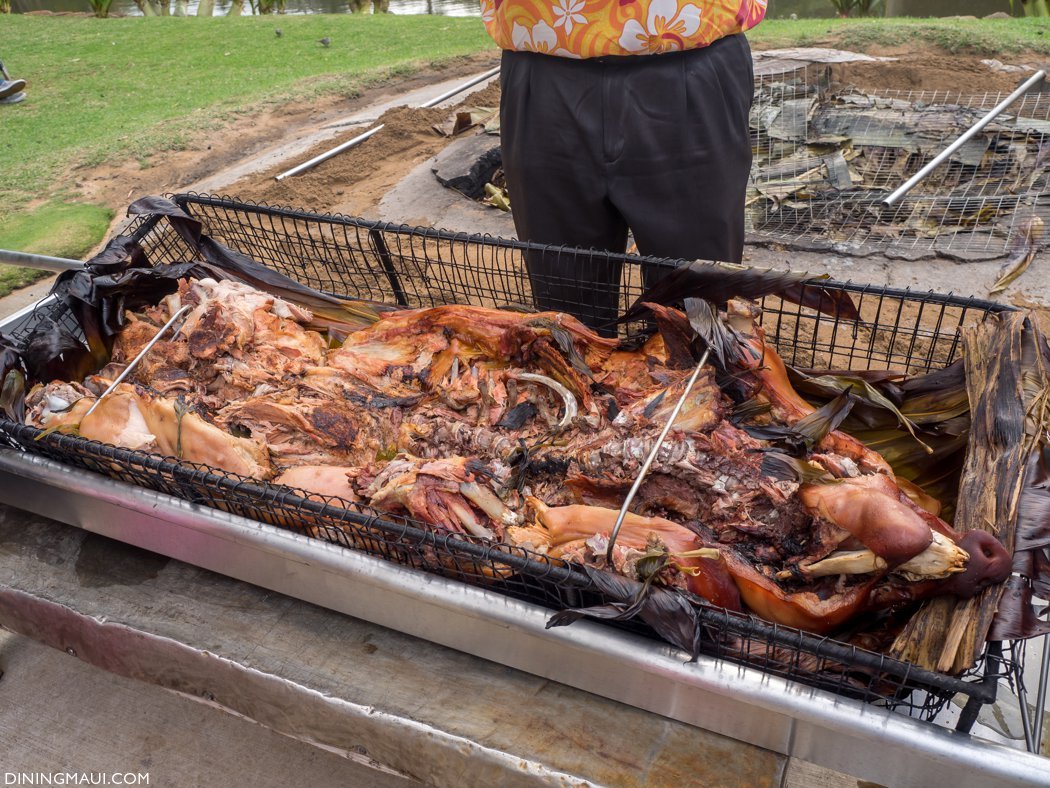
Thank native Hawaiians for the spectacle—and the tender Kalua pork that’s derived from it. Known as an imu, these underground ovens were used for cooking nearly everything in ancient Hawaii, from steaming taro (or kalo) for poi to roasting whole pigs, dogs, fish, chickens, fruits, and vegetables. While underground ovens were certainly not exclusive to native Hawaiians—they were used throughout Polynesia, Micronesia, America, and more—and while most Hawaiian homes had two imu (one for men, the other for women), the amount of effort required to construct one rendered it a means primarily saved for festive occasions. Generally two feet deep and four feet wide, it necessitates clearing and then gathering vegetation such as banana stumps and coconut fronds. “Puka puka” rocks—porous lava with lots of small holes—are used as coals; kindling, such as kiawe, as firewood. Now a Thanksgiving tradition throughout the Hawaiian Islands, Old Lahaina Luau goes down as one of the leading spots to experience the power of imu-cooked food: Their pua’a kalua (imu-roasted pork) is smoky, moist, and delicious.
Poke
Listen to the media and one might think that poke bowls are right up there with acai in terms of trendiness.
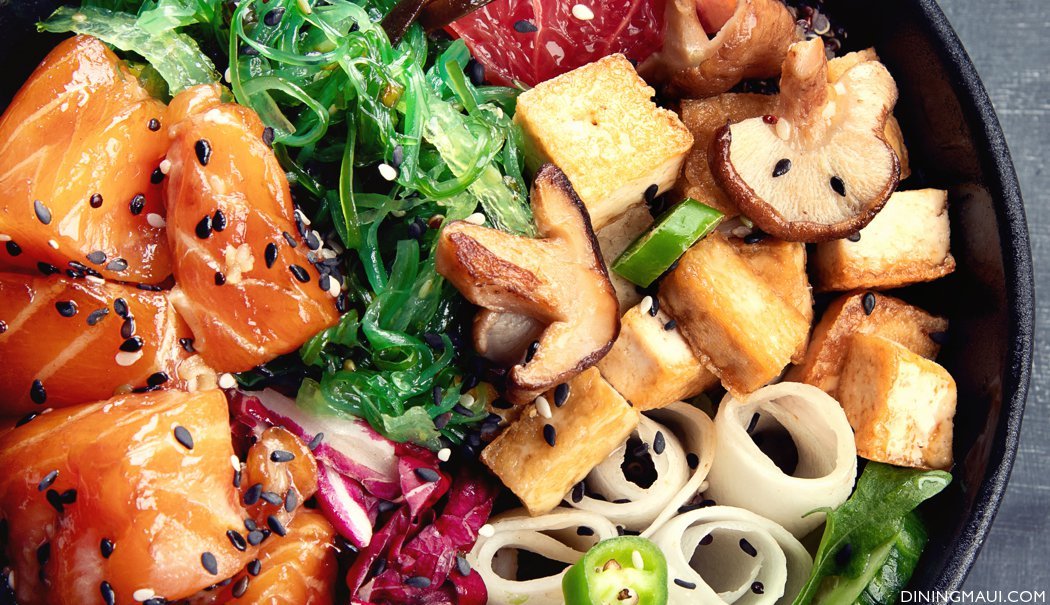
But poke—a manner of serving fresh, raw, cubed, and marinated fish—has been around since Polynesians first landed on Hawaii’s shores. Translated to “to cut crosswise into pieces,” poke’s original iteration is believed to have been reef fish seasoned with salt, seaweed, and kukui (candlenut) oil. As Afar puts it, “While it has since evolved into the “bowl of the moment,” the pre-colonial, raw fish dish is rooted in sustainability, having originated as a simple way to efficiently consume the “catch of the day.” In other words, the concept of farm to table (or sea to plate) is not a trend in Hawaii—it’s an authentic staple of traditional cuisine.” In the 60s and 70s, reef fish—dull and gray—began to be replaced with succulent, eye-pleasing cuts of pinkish-red ahi; today, poke is served in myriad ways, from spicy crab and ahi at Tamura’s Fine Wine & Liquors to tako (octopus) poke at Pukalani Superette. And while Foodland may at first glance be a run-of-the-mill grocery store, the island staple is every kama’aina’s go-to for their poke fix. (With varieties that include avocado, sweet chili, and wasabi, it’s no wonder.) If you’re looking for something more luxe (at least in terms of setting), check out Merriman’s in Kapalua, where Peter Merriman—one of the founders of Hawaiian Regional Cuisine—dishes out ahi poke with crushed avocado, asparagus, Maui onion, ogo seaweed, and Molokai sweet potato chips.
Ko‘ala and Pulehu
“There is no animal food which a Sandwich Islander esteems so much as fish,” said a visitor to Hawaii in 1834, The Journal of the Polynesian Society reports.

And so it was—and dare we say remains—true. In ancient Hawaii, fishing was as common amongst slaves as it was royalty, and filets were shared among one’s ‘ohana (or family/community). One method for preparing fish—besides kalua and poke—was known as ko‘ala, in which the fish was placed on top of hot coals. Used when one was away from home—for example, out in the fields—or when only a small amount was being prepared (and, thus, didn’t call for the effort of an imu), ko‘ala was the predecessor of what we know now as broiling.
Pulehu is similar, with the primary difference being that fish—as well as other foods—was cooked over hot ashes. Breadfruit—or ulu—bananas, and sweet potatoes were typically broiled with their skins intact; meat and some fish, meanwhile, were wrapped in leaves for protection against burning. If “pulehu” is found on menus today, it tends to mean that the dish—usually ribs, chicken, or steak—is marinated in a mix of garlic, kosher salt, sugar, and coarse black pepper (and occasionally ginger). Both forms of cooking remain modified but intact from house to hotel, but the aptly named restaurant Pulehu at the Westin Ka’anapali honors the method with a contemporary twist in their pan-fried Kona Kampachi (which is cooked in an open-exhibition kitchen).
Laulau
Translating to “leaf leaf,” laulau bears resemblance to the lupulu of Tonga and Samoa but its name as a food is something of a misnomer: “laulau” refers to a technique and a tool, with the “tool” being a leaf and the technique being the method of placing fillings (typically pork or butterfish) on a bed of kalo (called lu’au leaf) and tied with ti. It’s then secured in a protective covering of banana leaves and placed inside an imu. One of the mainstays of the Hawaiian diet—and, as such, a prominent feature at luaus—it has found its way onto the menus of renowned Hawaiian restaurants. Here on Maui, Lahaina’s Ono Kau Kau gets top marks for its laulau with beef curry, while Aloha Mixed Plate—also in Lahaina—serves a stomach-stretching (but worth it) Kalua Pig Plate that arrives with tender slices of pork, cabbage, lomi lomi salmon, poi, white rice, mac salad, and laulau.
Try It Your Self
With These
Hawaiian-Style Recipes
RECENT POSTS
Maui Restaurants
Coco Deck Lunch Review
After our west side beach day, we were all ready for a feast. Coco Deck delivered with a delicious lunch with drinks and games.
Havens Harborside Restaurant Review
Havens brings serious culinary credentials and epic evening dining to Maalaea, combining fresh catch, prime cuts, and harbor views.
Le Bazaar Maui
Le Bazaar Maui is located in Kihei and serves up delicious Moroccan food along with dancing performances and traditional attire you can wear!



